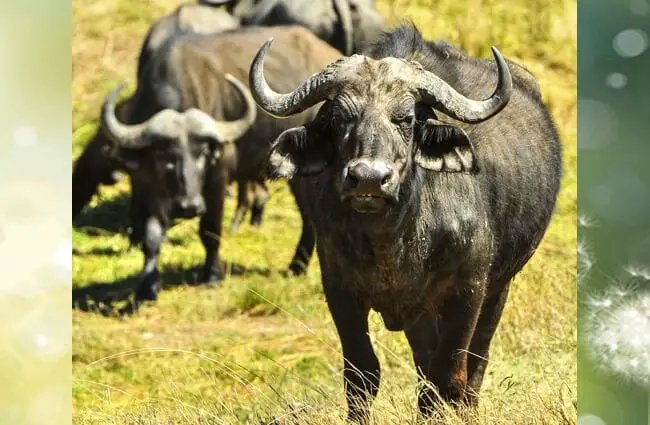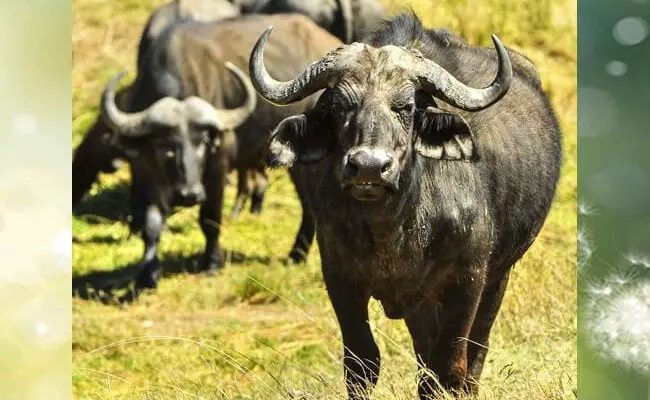
Imagine sitting down with a friend to explore the wide world of these remarkable animals over coffee. It’s kind of like learning about someone’s quirky but lovable pet that has its own special habits. Water buffalo are herbivores—they mainly munch on grass, but their diet and foraging habits tell us so much about their behavior, environment, and role in the ecosystem. Let’s dive deeper into the world of water buffalo to uncover the details of what they eat and how they find their food.
Understanding the Water Buffalo’s Diet
Water buffalo are primarily herbivores, which means they thrive on a plant-based diet. Their main meals consist of a variety of grasses, sedges, and other aquatic plants. You might be wondering how such a large animal can sustain itself on just plants. Here’s the thing: water buffalo have a specialized digestive system that allows them to break down tough plant materials efficiently.
Interestingly, their grazing habits can affect their surroundings. Water buffalo will often graze in wetlands and marshy areas, helping to control vegetation while also creating open spaces for other species. This grazing behavior is important for maintaining the health of their ecosystems.
One of the main reasons water buffalo can survive in diverse habitats is their ability to adapt their diet according to availability. During the dry season when certain plants might not be available, they’ll shift their focus to what’s out there, including fallen fruit and shrubs. This flexibility helps them thrive in varying conditions.
Foraging Techniques of Water Buffalo
When it comes to finding food, water buffalo use their keen sense of smell and sight. They often roam in groups, known as herds, which helps them locate food more efficiently. In these herds, they communicate with each other through sounds and body language. You know, it’s almost like a family gathering where everyone keeps an eye out for the best snacks!
The presence of water is crucial for water buffalo, as they often graze near rivers and wetlands. They not only find a variety of plants there but also tend to stay cool on hot days. If food is scarce, they can wade into the water to reach plants submerged below the surface. Honestly, it’s a clever way to expand their diet when options are limited.
Their long tongues, which can extend out of their mouths to grasp tough grasses, play a key role in their foraging strategy. With these tongues, water buffalo can snag food that would be tricky for many other animals. It’s like having a built-in tool that makes foraging easier!
The Importance of Water to Their Diet
Water buffalo are, as the name suggests, closely linked to water sources. They’re often found in regions with plenty of water, like river valleys and swamps. You might think they’re just lounging around, but they’re actually using this water to aid their digestion and keep their bodies cool.
When water buffalo drink, they’re not just quenching their thirst; they’re also playing a significant role in their diets. Water helps break down the plant materials they’re consuming, making nutrients more accessible for absorption. This is crucial since their diet is high in fibrous grasses that require a lot of energy to digest.
Additionally, their access to water sources creates a thriving habitat not just for themselves, but also for a plethora of other animals, making water buffalo integral to their ecosystems. Imagine them as the hosts of a party, where their presence makes room for many other species to join in.
Social Structure and Feeding Behavior
Water buffalo are social animals, and their feeding behavior reflects this. Usually, they graze together in herds, which provides both safety and efficiency. A herd can cover more ground in search of food and can also protect each other from potential threats.
In a herd, dominance plays a role in feeding. The stronger, more dominant buffalo often get first dibs on the best grazing spots. Yet, there’s a sense of cooperation as well. Often, younger or weaker buffalo will benefit from the older ones guiding them to new feeding areas. It’s like having a mentor who leads you to the best restaurants in town!
Interestingly, their feeding time is often synchronized. They tend to eat at similar times and locations, which helps them maintain social bonds and makes it easier to spot dangers. You can think of it as a group picnic, where everyone keeps an eye out for both tasty bites and intruders!
Hunting Strategies? Not Quite!
So, you might be scratching your head, thinking, “Hunting strategies? But water buffalo don’t hunt!” And you’re right! Instead of hunting, these animals are herbivores that focus on foraging and grazing. However, they do have ways of protecting themselves from predators while they go about their business.
Water buffalo are known for their impressive size and strength, which they can utilize when threatened. If a predator like a tiger or lion comes along, these formidable creatures will band together, using their mass to deter the threat. Their sheer presence can be enough to send predators packing.
While they don’t hunt for food, their defensive tactics can be seen as a kind of strategy to keep their young safe. Mother water buffalo are fiercely protective of their calves, often staying close and watching for danger. You might say their protective instincts are a crucial part of their survival strategy.
The Role of Water Buffalo in Ecosystems
Water buffalo play a vital role in their ecosystems, far beyond just being herbivores. Their grazing habits help manage plant growth, preventing overgrowth that could choke off other species. This is especially important in wetlands, where too much plant life can disrupt the balance of the habitat.
Additionally, their foraging activities create pathways that benefit other animals. Many smaller species rely on these trails for easier movement through dense vegetation. It’s like water buffalo are the landscapers of their environment—nurturing and shaping it as they go about their day!
Their dung also serves an essential purpose, enriching the soil and fostering plant growth. This means that they’re not just engaging in a simple food cycle; they’re actively contributing to the health of their environment. It’s a win-win situation!
The diet and hunting strategies of the water buffalo offer a fascinating glimpse into the life of these gentle giants. While they might not hunt in the traditional sense, their foraging skills, social behaviors, and adaptability make them extraordinary survivors. They are more than just big animals; they are crucial players in their ecosystems.
Understanding how water buffalo live and thrive helps us appreciate the intricate connections within nature. So the next time you picture a water buffalo swirling in mud or grazing by a river, remember that there’s a lot more going on beneath the surface. These magnificent creatures not only sustain themselves through their diet but also support the health and balance of their habitats.

